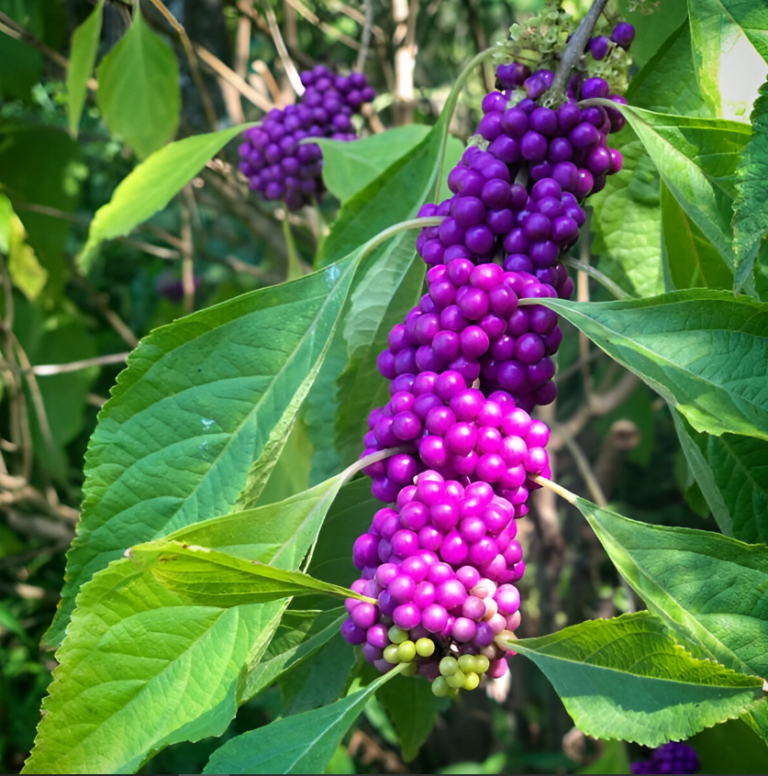American Beautyberry (Callicarpa americana) is a popular native shrub, known for its striking purple berries and its ability to attract wildlife. If you’re wondering how to propagate American Beautyberries, this guide will walk you through the most effective ways to propagate them, either through seed propagation or by taking cuttings. Whether you’re a seasoned gardener or a novice, learning how to propagate American Beautyberries can be a rewarding process.
Benefits of Propagating American Beautyberries
Understanding how to propagate American Beautyberries offers several advantages, including:
- Enhancing the biodiversity of your garden
- Attracting pollinators and wildlife
- Cultivating a stunning and easy-to-maintain shrub
Seed Propagation
Harvesting Seeds
Beautyberry seeds are typically harvested in the fall, once the vibrant purple berries ripen.
- Collect the ripe berries and remove the seeds.
- Clean the seeds thoroughly to remove any remaining fruit pulp.
- Allow the seeds to dry for a day or two before storing them.
Cold Stratification
Cold stratification is essential for American Beautyberry seeds to germinate successfully. Mimic the natural winter cycle by storing your cleaned seeds in a cool place.
- Place seeds in a plastic bag with damp peat moss.
- Store them in the refrigerator for 60 to 90 days.
- Ensure moisture levels remain consistent throughout this period.
Learn about other seed-growing techniques by reading this comprehensive guide on how to grow a fig tree from seed, which also involves stratification for better results.
Sowing the Seeds
After stratification, sow the seeds in well-draining soil and lightly cover them. Keep the soil moist and place the seed tray in indirect sunlight. Beautyberry seeds generally take 4 to 6 weeks to sprout under the right conditions.
Propagation by Cuttings
Selecting and Preparing Cuttings
For faster propagation, you can opt for cuttings. Select semi-hardwood cuttings during the late summer months:
- Choose stems about 4 to 6 inches long.
- Remove the lower leaves, leaving a few at the top.
- Dip the cutting in rooting hormone for better results.
Plant your prepared cuttings in a container with well-draining potting mix. Ensure the container is kept in a shaded area and mist regularly to maintain humidity.
If you’re already familiar with taking cuttings for other plants, like those in your bougainvillea garden, you can adapt some of those techniques here as well. For additional tips on cuttings, check out the complete guide to growing bougainvillea.
Transplanting and Care
Once your seedlings or cuttings have developed strong roots, it’s time to transplant them into your garden.
Best Soil Conditions
Beautyberries prefer well-drained soil and grow best in partial shade to full sun. Make sure to plant them in an area where water can easily drain away to prevent root rot.
Long-Term Care
- Watering: Keep the soil consistently moist but not waterlogged.
- Fertilization: Apply a slow-release, balanced fertilizer in early spring.
- Pruning: Prune during late winter or early spring to shape the plant and remove dead branches.
For more long-term care tips on native plants like beautyberries, visit this detailed guide on American Beautyberry care tips.
FAQs About Beautyberry Propagation
1. How long does it take for beautyberry seeds to germinate?
Seeds typically germinate within 4 to 6 weeks after cold stratification and sowing.
2. Do I need to prune my beautyberry plant?
Yes, pruning in late winter helps shape the plant and encourages new growth for the coming season.
3. What are common issues with propagating beautyberries?
While beautyberries are relatively easy to propagate, common issues include overwatering, poor root development in cuttings, and failure to properly stratify seeds.
By following these methods, you’ll have a thriving American Beautyberry in your garden in no time! Make sure to stay patient throughout the propagation process, as beautyberries may take some time to establish but are well worth the effort.
